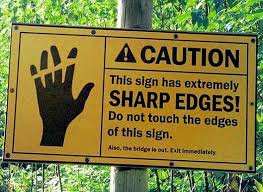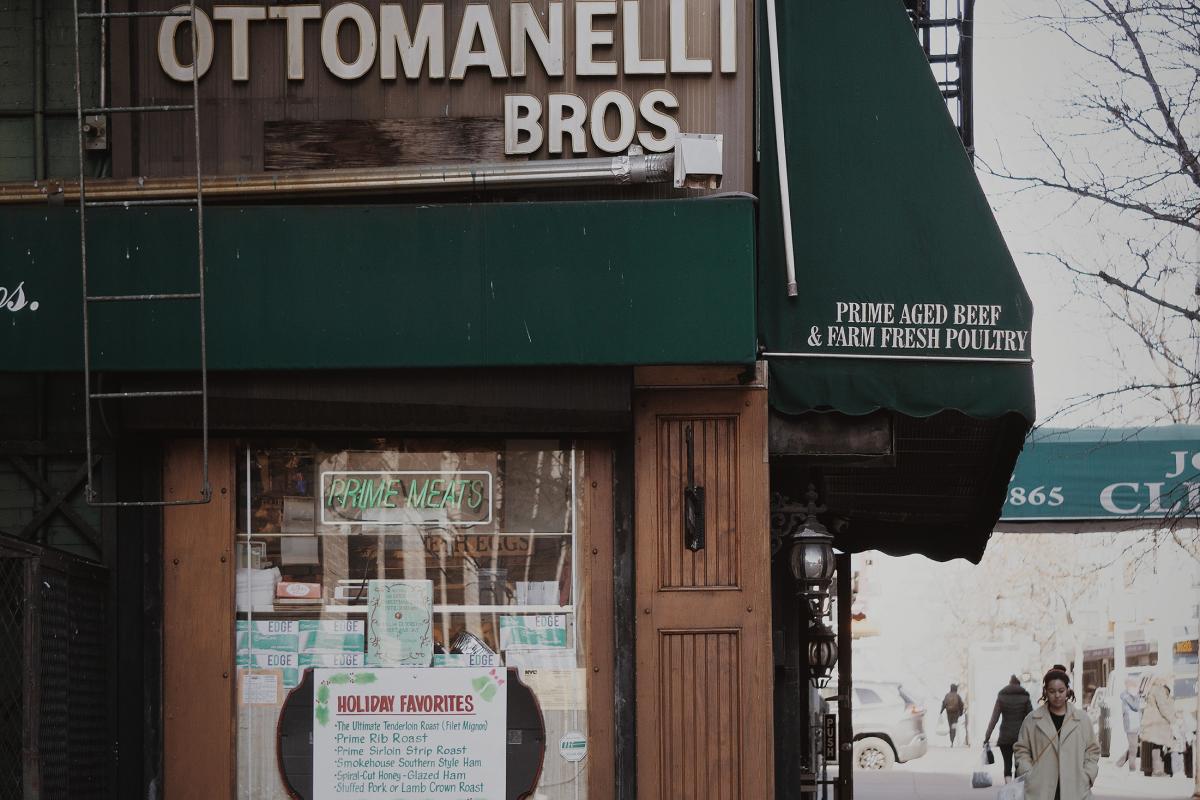The signage you create for the return to work will determine your business’ success in the coming year.
All the effort you’ve put into maintaining team morale during these weeks of lockdown could be undone in 30 seconds when people walk back into your office. If you’re re-opening your stores, the first thing people see when they walk in will determine how often they want to come back.
If you’re running an airline, what you say beyond the usual safety briefing will avoid people suffering 8 hours of the screaming heebie jeebies all the way to New York (using that little loo after 20 other passengers? hmm...) and instead help them settle comfortably into their seat, marvel at having a meal served to them for the first time in 3 months and enjoy the chance to take a break from family life (or is that just me?)
Whatever you do, don’t leave the language of your signage and customer announcements to the legal or HR teams. They’re good at rules but not so delicate handling social authority:

Will you make people feel welcome, safe and ready to work together or feel like they’ve been sent back to school?
No one’s been going to a bank for fun recently, but instead of acknowledging their customers’ urgent needs and giving them a sympathetic welcome, here’s how one building society has been greeting people coming in:

Something as school-like as this might be forgiven in the heat of a crisis, but it’ll feel like we’ve gone back to the bad old days of banking if something better isn’t created soon.
And merely saying ‘Welcome’ before giving people a list of restrictions doesn’t really convince them that they’ll have the same customer experience they used to:

Instead, it feels like an updated swimming pool notice from the 70s. Card payments only, no reusable cups, no petting.
If you’re a brand-centric organisation your margin is your story, your story is everything you say, and your brand voice will have to learn how to say a lot more new things in the coming weeks.
Your brand voice will now have to navigate telling people to keep their distance at critical pinch points, ask them to observe one-way systems around office and shop floors, give directions on handling coffee cups, limit the number of people they’re allowed to have in a meeting room - and tell them how to clean the room after.
Whether you add brand value or destroy it in the coming weeks (and that’s as important inside your office as in external communications) depends on a little knowledge of linguistics, a touch of copywriting skill, and a handy dose of the 70s psychoanalytic theory, Transactional Analysis.
First, the linguistics. A study by the Journal of Politeness Research (which sounds like a lovely place to work) proved that conversations which don’t start with the normal, expected social niceties more often end in failure. We now know that if the first thing out of the mouth of a contact centre worker on a call is, ‘What’s your customer number?’ then the call has a greater statistical chance of ending in failure.
What some brand teams are now thinking about doing risks creating the same effect. Instead of pushing harder for a warmer, on-brand welcome when people first come into the office or store, the signage and language they’re considering will create a hostility barrier. Why?
Here’s where Transactional Analysis comes in. In this theory, we are all operating in one of three states at any time: Adult, Child or Parent.
When we communicate, we automatically do it in the language of the state we’re in. Importantly, when someone hears what we – or our brand – says, they’re in their own state. Talking like an adult to someone who happens to be in an adult state works well. Parent to child works well. Things break down when we get our wires crossed:

It’s why that building society notice fails: I’m walking in to do important banking as a responsible adult and you’re assuming that I’m acting like a child that has to be told what to do. (It’s also the reason why so many conversations between ad agency account teams and creative teams used to go wrong, but that’s another story.)
If you want your brand voice to be heard and respected, you have to get your ego state right and respect the ego state of the other person.
“I’m OK, you’re OK.”
That’s where the skilful copywriting comes in. Here’s an example from one of our clients, X, part of Alphabet. It’s a ‘Moonshot Factory’ where they develop world-changing tech like Waymo driverless cars. Secrecy is critical:

The sign skilfully owns the job of talking about the importance of secrecy for the company but it also speaks to the adult state of the reader and their responsibility for maintaining that secrecy.
The recent pandemic has proven the supremacy of language for changing people’s behaviour. Almost everyone can recite ‘Stay Home. Protect the NHS. Save Lives.’ and its successor, ‘Stay Alert. Control the Virus. Save Lives.’ (even if we didn’t think it was effective - let’s not go back into that heated discussion). So, how can your brand voice use language to own social authority?
It certainly isn’t with cod poetry – what another of our clients parodied as ‘Please keep your feeties/Off our seaties’ when they saw the London Underground work.
Instead, you need to remember that one of the most successful ways to signal an Adult to Adult conversation is with humour: if I make a joke, I’m assuming you’ll get both the joke and the underlying message. When Air New Zealand updated their safety message in 2014, it became so famous that other airlines, including British Airways, copied them 3 years later.
We’ve worked with a number of clients in the automotive sector on their language during lockdown and we’re now seeing a number of retailers asking how they can direct their customers and office teams in an on-brand way. It’s complicated, obviously requiring project management of the physical signs and the language. Complicated, but not difficult, as my local coffee shop has proven:

Chris West is ‘Head of Voices’ at Verbal Identity, the brand language consultancy. He rants, raves, blethers and blathers here on LinkedIn or you can contact him directly on email.



